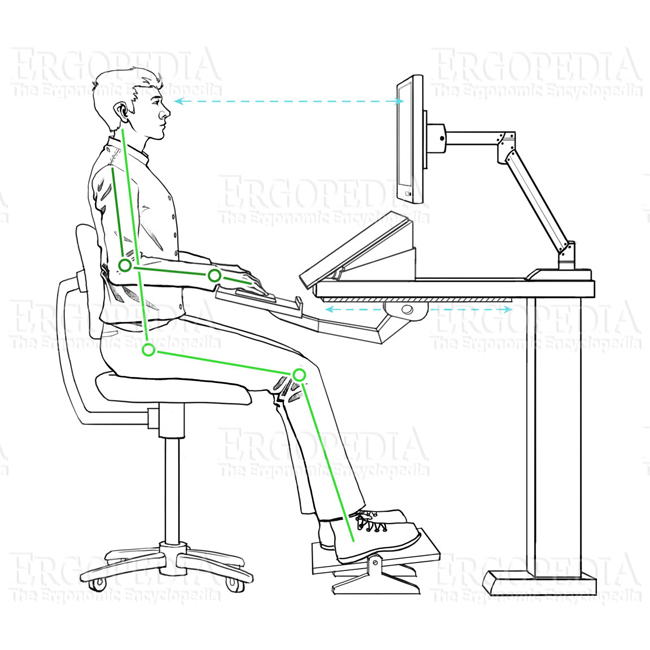 Improper
Seating Posture and Chair Adjustment
Improper
Seating Posture and Chair Adjustment
*** Please note this page
has been updated and moved to http://www.ergopedia.ca/risk_factors/Incorrect_Seating_Position_and_Posture.html
***
What is the Correct Seating
Posture and Chair Adjustment to Adopt to Minimize Risk Factors
when Seated?
The chair should be adjusted to a height so that the thighs of
the user are parallel to the floor, or slightly inclined towards
the knee. The backrest should be flush against the back of
the user to provide support for the lower back (including lumbar
support). The angle at the hips and knees should be
slightly greater than 90° to allow the feet to be slightly
forward of the knee of the user, under the desk. If
required, a foot rest can be added to support the foot and
prevent
plantarflexion
of the ankle. There should be at least 1.5" of space
behind the back of the leg to prevent the front edge of the seat
Arm rests (either on the chair or mounted on the work surface)
can also be helpful as they can assist in taking the load of the
weight of the arms off the shoulders. This will remove a
source of bad posture and relieve the strain on shoulder and
back muscles from supporting arm weight.
Why is Improper Seating Posture and Chair Adjustment a Risk
Factor?
If adjustments or usage of the chair is incorrect, circulation
can become impeded and muscle fatigue and cramping can
occur.
How Close to Ideal does the Seating Posture and Chair
Adjustment have to be to avoid it being a Risk Factor?
There is a fair amount of variance in tolerance to poor posture
throughout the population. However, individuals know when
they are experiencing discomfort, although they may not always
realize it is the chair. For some individuals, even being
slightly 'off' is sufficient to be a risk factor if it causes
pain and discomfort, but this is something that varies widely
from person to person.
What are the Symptoms of a Chair which is in the Wrong
Position or Improper Seating Posture?
Symptoms to look for include forced shifting of weight
distribution in the chair's seat to address lower back
pain/discomfort or pressure points on the seat or underside of
the thighs, or moving of legs to relief stiffness, numbness,
aches or pains.

 Improper
Seating Posture and Chair Adjustment
Improper
Seating Posture and Chair Adjustment